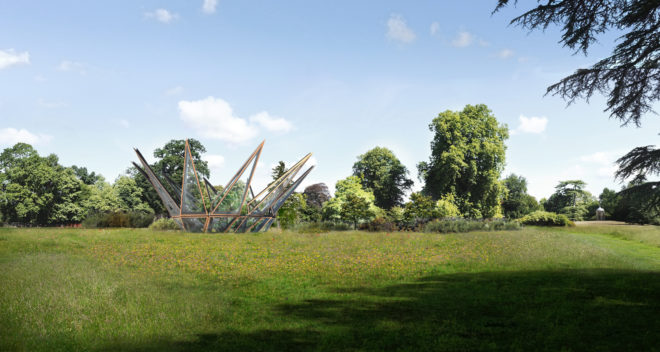Bespoke glasshouse at elegant gardens is approved
April 3, 2019
A beautifully-designed Glasshouse and new formal garden is to be created to complement a historic venue in West Sussex.
The Woolbeding Charity has been granted permission for the unique public art scheme on a parcel of land next to the 2,000-acre Woolbeding House and Gardens, which is operated by the National Trust.
The bespoke petal-shaped Glasshouse will be both a piece of public art and a visitor attraction as part of the wider offer at Woolbeding Gardens. Taking inspiration from the fabled “Silk Road”, an ancient trading route linking East and West, the setting will include a range of native and more exotic flora. A new pathway will lead visitors through planting to the glasshouse.
The applicants undertook extensive public consultation as part of their pre-application approach, including working with the South Downs National Park Authority (SDNPA) Design Review Panel.
Members voted to approve the plans at the Authority’s Planning Committee.
The Woolbeding Estate has been developed over centuries by a number of patrons and was acquired by the National Trust in 1958. The property was leased to Simon Sainsbury and Stewart Grimshaw in 1973 and together they restored the gardens and created a number of new spaces and follies throughout the site which give the venue an intriguing character. The gardens have been open to the public since 2011.
Tim Slaney, Director of Planning at the South Downs National Park Authority, said: “This high-quality scheme will introduce an innovative glasshouse with contemporary signature design to complement the existing public offering. This beautiful structure echoes Victorian glasshouses and references to the large 19th century glasshouse that previously existed next to the mansion. It is a wonderful example of an outstanding 21st century addition to the parkland.
“Simon Sainsbury and Stewart Grimshaw have layered contemporary interventions into a historic site and this glasshouse continues that tradition in a sensitive way.”
The plans were designed by multi-award winning British design and architecture specialists Heatherwick Studio.

